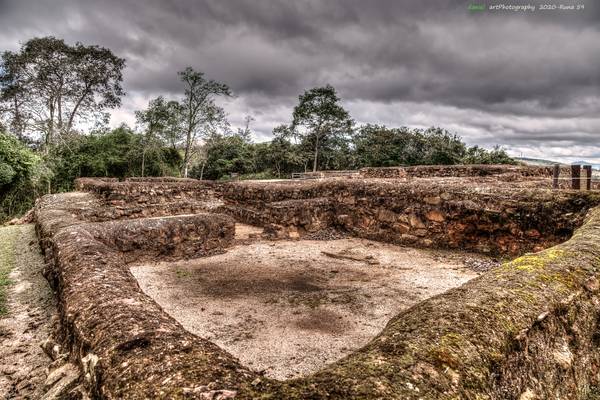Bolivia »
Sector Administrativo II, El Fuerte

0
Runa Photography, Daniel © 2020 © Some rights reserved, don´t use this image without my permission
The site of Samaipata was occupied as a ritual and residential area about 300 CE by the Chané of the Mojocoyas period (200 to 800 CE). They began shaping the great rock that is the ceremonial center of the Samaipata ruin.
According to a 17th-century Spanish chronicler, Diego Felipe de Alcaya, the Incas, probably late in the reign of Tupac Yupanqui (ruled 1471-1493), began the incorporation of the Samaipata area into the empire. A relative of Yupanqui's named Guacane led an Inca army to the area and with elaborate gifts persuaded the local leader, whose title was Grigota, and his 50,000 subjects to submit to Inca rule. Guacane established his capital at Samaipata or Sabay Pata on a mountain top at an elevation of 1,900 metres (6,200 ft). Samaipata means "the heights of rest" in the Quechua language spoken by the Inca.
Samaipata was an Inca administrative, ceremonial, and religious center. As with other Inca administrative centers on the frontiers of the empire (such as Oroncota), Samaipata was protected by outlying fortresses. One has been located about 50 kilometres (31 mi) to the east called La Fortaleza. The ruins of the fort are on a mountaintop overlooking the lowlands around the present-day city of Santa Cruz. Another fortress. location unknown, called Guanacopampa protected a mine at Saypurú or Caypurum, location also unknown.[8] The Samaipata area was one of the most isolated and easternmost areas of the Inca Empire.
According to Alcaya's account, Guacane and Grigota were killed in an attack by the Eastern Bolivian Guaraní people called Chiriguanos by the Spanish. The Chiriguanos were advancing from the lowlands into the Andes foothills. A counterattack by the Incas failed to dispossess the Chiriguanos who remained to settle in Samaipata and its vicinity. An Inca building destroyed by fire at Samaipata gives credence to this story.[9] The date of the war is uncertain, although many authorities date the beginning of Chiriguano attacks on the Inca's eastern frontiers to the 1520s.
The Spanish, along with Inca supporters, may have used Samaipata as a fortress and base camp as early as the 1570s, but formal Spanish settlement began in 1615 while the Chiriguanos were still threatening. A Spanish house is among the ruins.
Source: wikipedia